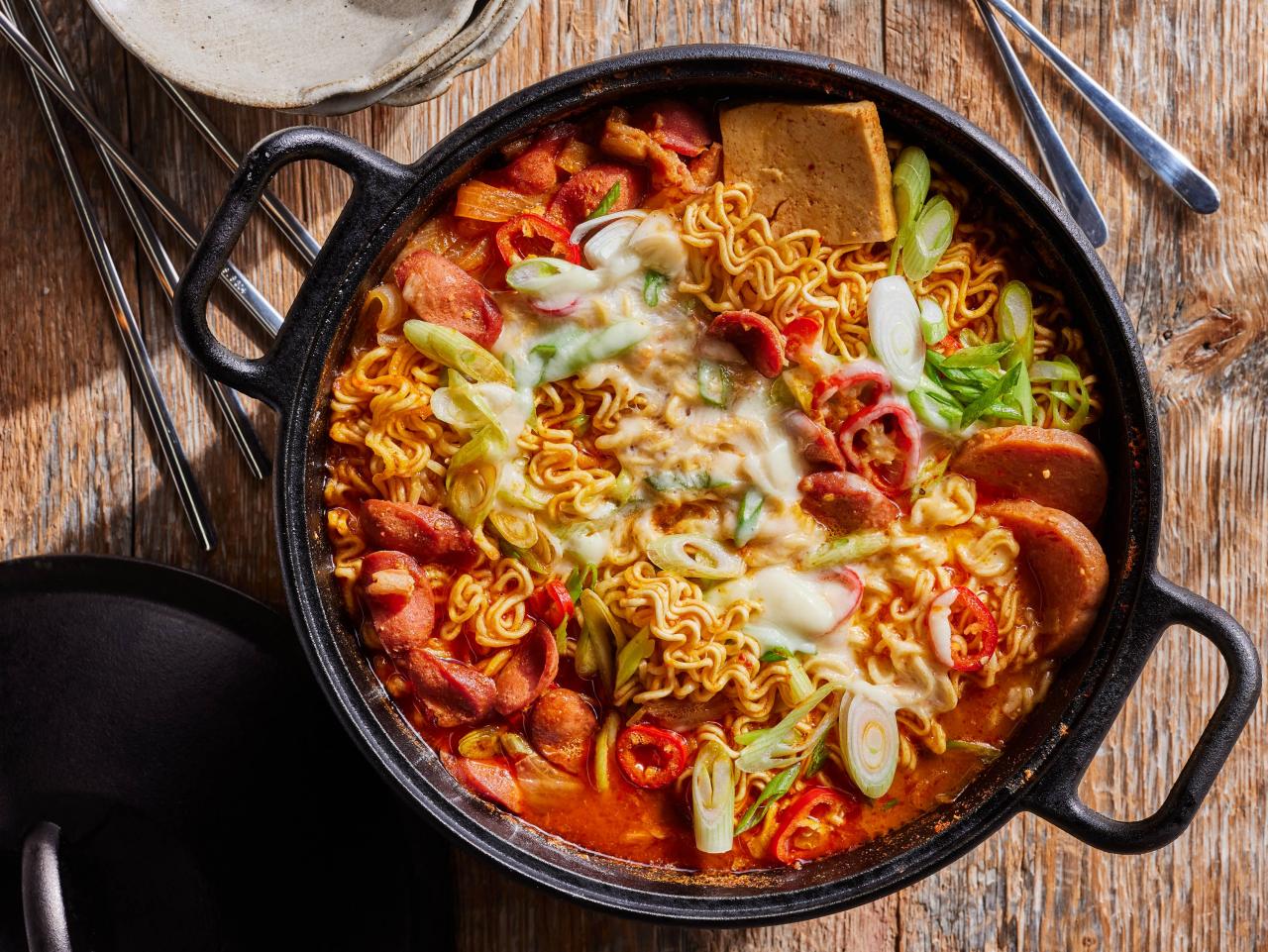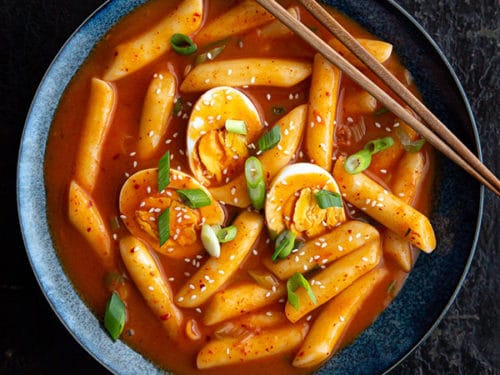Korean Soft Tofu Stew, known as Sundubu Jjigae, is a beloved comfort food that holds a special place in Korean cuisine. This hearty and flavorful stew is cherished for its silky tofu, rich broth, and customizable ingredients that make it a favorite among Koreans and food enthusiasts worldwide.
Origins and Cultural Significance
Sundubu Jjigae has humble beginnings, originating from home kitchens in South Korea. While the exact origins of the dish are unclear, it is believed to have emerged as a way to utilize leftover ingredients and create a nourishing meal. Over time, Sundubu Jjigae gained popularity and became a staple dish in Korean households, restaurants, and street food stalls.
Beyond its culinary significance, Sundubu Jjigae holds cultural importance as a comforting and communal meal. It is often enjoyed during cold weather or when seeking comfort after a long day. In Korean culture, sharing a pot of Sundubu Jjigae with family and friends fosters a sense of warmth, connection, and togetherness.

Key Ingredients and Variations
At the heart of Sundubu Jjigae is soft tofu, known as “sundubu” in Korean. This type of tofu is unpressed, resulting in a delicate texture that easily breaks apart. Other essential ingredients include a flavorful broth, typically made from anchovy or beef stock, as well as aromatics such as garlic, ginger, and green onions.
One of the defining features of Sundubu Jjigae is its versatility. While the basic recipe calls for tofu and broth, the stew can be customized with various ingredients to suit individual preferences. Common additions include seafood (such as clams, shrimp, or mussels), meat (such as pork or beef), vegetables (such as mushrooms, zucchini, or spinach), and spicy seasonings like gochugaru (Korean chili flakes) or gochujang (Korean chili paste).
Preparation and Cooking Process
Making Sundubu Jjigae at home is relatively straightforward, making it accessible to cooks of all skill levels. Here’s a general overview of the preparation and cooking process:

1.Prepare the Broth:
- Start by heating a pot or a clay pot (ttukbaegi) over medium heat. Add anchovies, dried kelp (dashima), and water to create a flavorful broth. Simmer for about 15-20 minutes, then strain the broth to remove the anchovies and kelp.
2.Prepare the Aromatics:
- While the broth is simmering, chop garlic, ginger, and green onions. These aromatics will add depth of flavor to the stew.
3.Add Tofu and Ingredients:
- Once the broth is ready, add the chopped aromatics to the pot. Then, carefully add the soft tofu, using a spoon to gently break it into chunks. Add any additional ingredients, such as seafood, meat, or vegetables, based on your preference.
4.Season the Stew:
- Season the stew with soy sauce, fish sauce, or salt to taste. For a spicy kick, add gochugaru or gochujang according to your desired level of heat.
5.Simmer and Serve:
- Allow the stew to simmer for a few minutes to allow the flavors to meld together and the ingredients to cook through. Once everything is heated through and the tofu is soft, the Sundubu Jjigae is ready to serve.
6.Garnish and Enjoy:
- Garnish the stew with chopped green onions and optionally, a cracked egg. Serve the Sundubu Jjigae piping hot with a bowl of steamed rice and additional side dishes for a complete meal.

Health Benefits and Nutritional Value
In addition to its delicious taste, Sundubu Jjigae offers numerous health benefits. Tofu, the star ingredient of the stew, is a rich source of plant-based protein and essential nutrients such as calcium, iron, and magnesium. The stew is also low in calories and saturated fat, making it a nutritious option for those seeking a balanced diet.
Furthermore, Sundubu Jjigae is believed to have digestive benefits due to the probiotics present in fermented ingredients such as kimchi or fermented soybean paste (doenjang), which are commonly served alongside the stew. These probiotics promote gut health and aid in digestion, contributing to overall well-being.
Cultural Significance and Social Context
Beyond its culinary and nutritional aspects, Sundubu Jjigae holds cultural significance as a symbol of comfort, hospitality, and community. In Korean culture, sharing a pot of Sundubu Jjigae with loved ones fosters a sense of connection and togetherness. The communal act of gathering around a steaming pot of stew, sharing stories, and enjoying each other’s company is deeply ingrained in Korean social customs.
Sundubu Jjigae is also celebrated as a form of self-care and nourishment, offering comfort and solace during challenging times. Whether enjoyed alone as a soul-soothing meal or shared with friends and family as a communal feast, Sundubu Jjigae embodies the idea of food as nourishment for both the body and soul.
Ingredients:KOREAN SOFT TOFU STEW
- 4 cups water
- 4 dried anchovies
- 1 piece dried kelp (about 3×3 inches)
- 2 cloves garlic, smashed
For the Stew:
- 1 tablespoon vegetable oil
- 1/2 onion, thinly sliced
- 2 cloves garlic, minced
- 1/2 cup kimchi, chopped
- 1/4 cup kimchi juice (from the jar)
- 1 tablespoon gochugaru (Korean chili flakes)
- 1 tablespoon soy sauce
- 1 teaspoon sesame oil
- 1 teaspoon fish sauce (optional)
- 1 cup seafood (such as shrimp, clams, or mussels)
- 1 package soft tofu (about 14 ounces), cut into cubes
- 2 green onions, chopped
- 1 egg (optional)
- Salt and pepper to taste
- Sesame seeds for garnish
:max_bytes(150000):strip_icc()/beef-rice-bowl-03bfaaa9d9a04135a395e8c599a7828c.jpg)
Instructions:KOREAN SOFT TOFU STEW
1. Prepare the Broth:
- In a pot, add 4 cups of water, dried anchovies, dried kelp, and smashed garlic cloves.
- Bring the mixture to a boil over medium-high heat.
- Once boiling, reduce the heat to low and let the broth simmer for 15-20 minutes to infuse the flavors.
- After simmering, strain the broth to remove the anchovies, kelp, and garlic. Set the broth aside.
2. Prepare the Stew:
- Heat vegetable oil in a large pot or Korean earthenware pot (ttukbaegi) over medium heat.
- Add sliced onions and minced garlic to the pot, and sauté until the onions are translucent.
- Add chopped kimchi to the pot and cook for a few minutes until it becomes fragrant.
- Pour in the kimchi juice from the jar and stir to combine.
- Add gochugaru (Korean chili flakes), soy sauce, sesame oil, and fish sauce (if using) to the pot, and mix well.
- Add seafood of your choice to the pot and cook until it’s partially cooked.
- Carefully add the cubed soft tofu to the pot, making sure not to break it.
- Gently stir the stew to combine all the ingredients, being careful not to break the tofu.
- Let the stew simmer for 5-10 minutes to allow the flavors to meld together and the seafood to cook through.
- Taste the stew and adjust the seasoning with salt and pepper as needed.

3. Serve the Stew:
- Once the stew is ready, sprinkle chopped green onions over the top.
- If desired, crack an egg into the center of the stew and let it cook until the whites are set but the yolk is still runny.
- Garnish the stew with sesame seeds for added flavor and presentation.
- Serve the Sundubu Jjigae hot with a bowl of steamed rice and additional side dishes, such as kimchi or pickled radishes.
FAQs
-
What is Korean Soft Tofu Stew (Sundubu Jjigae)?
- Sundubu Jjigae is a traditional Korean stew made with soft tofu (sundubu), seafood or meat, vegetables, and a flavorful broth. It is known for its silky texture and spicy, savory flavor.
-
What does “Sundubu” mean?
- “Sundubu” refers to the soft tofu used in Sundubu Jjigae. It is unpressed tofu with a delicate texture that easily breaks apart, adding creaminess to the stew.
-
What are the key ingredients in Sundubu Jjigae?
- The key ingredients in Sundubu Jjigae include soft tofu, broth (typically made with anchovies or beef), garlic, onions, kimchi, gochugaru (Korean chili flakes), and various seafood or meat options such as shrimp, clams, or pork.
-
Is Sundubu Jjigae always spicy?
- Sundubu Jjigae is known for its spicy flavor, but the level of spiciness can be adjusted according to personal preference. Gochugaru (Korean chili flakes) is commonly used to add heat to the stew, but it can be omitted or reduced for a milder version.
-
Can Sundubu Jjigae be made vegetarian or vegan?
- Yes, Sundubu Jjigae can be made vegetarian or vegan by omitting the seafood or meat and using vegetable broth instead of anchovy broth. Additional vegetables such as mushrooms, zucchini, or spinach can be added for flavor and texture.
Conclusion
In conclusion, Korean Soft Tofu Stew, or Sundubu Jjigae, is a cherished dish that embodies the essence of Korean cuisine. With its silky tofu, flavorful broth, and customizable ingredients, Sundubu Jjigae offers a comforting and nourishing meal that warms both the body and soul. Whether enjoyed alone or shared with loved ones, Sundubu Jjigae is a culinary delight that transcends borders and brings people together through the universal language of food.
